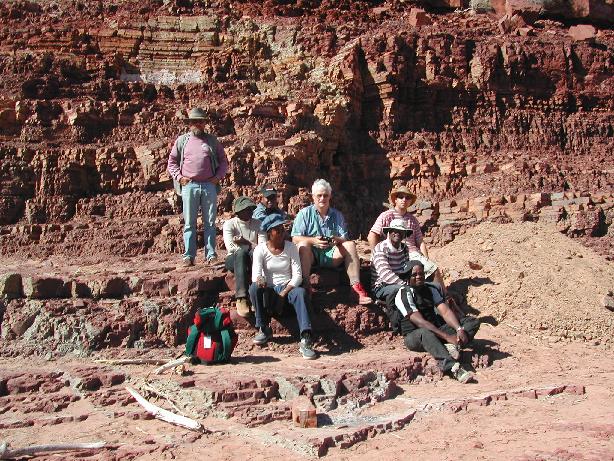In this project we are studying the nature and origins of petroleum samples from various regions in the Southern Hemisphere.
Severely biodegraded bitumens occur in veins and fluid inclusions in Cambrian and Neoproterozoic rocks of the Fish River Canyon of Namibia. The geochemical signature of these samples, reconstructed from pyrolysates of the bitumens, does not resemble old oils worldwide and suggests they were sourced from a saline, non-marine sediment. A close geochemical match has been established with a saline lacustrine facies of the Permian Whitehill Formation of South Africa and an equivalent but un-named unit in Namibia.

Hydrogen isotopic signatures offer a potentially new and important way to correlate oils with each other and with their source rocks. How well this works depends on the degree to which organically-bound hydrogen in hydrocarbons resists exchange reactions over very long timescales. A study of terrestrial oils from Eastern Australia support the notion that exchange is sufficiently limited for the D/H ratios to be valuable. Moreover, in the same basin, petroleum source rocks and derived oils of similar age but different organofacies can have vastly different D/H ratios suggesting that signals from different hydrologic regimes are preserved in petroleum n-alkanes. In contrast to n-alkanes, acyclic isoprenoids appear able to undergo D/H exchange over long timescales.
Publications
- Schimmelmann A., Sessions A.L., Boreham C.J., Edwards D.S., Logan G.A., and Summons R.E. (2004) D/H ratios in terrestrially sourced petroleum systems Organic Geochemistry 35:1169-1195.
- Sessions A.L., Sylva S.P., Summons R.E., and Hayes J.M. (2004) Exchange of carbon-bound hydrogen over geologic timescales. Geochimica et Cosmochimica Acta 68:1545-1559.


